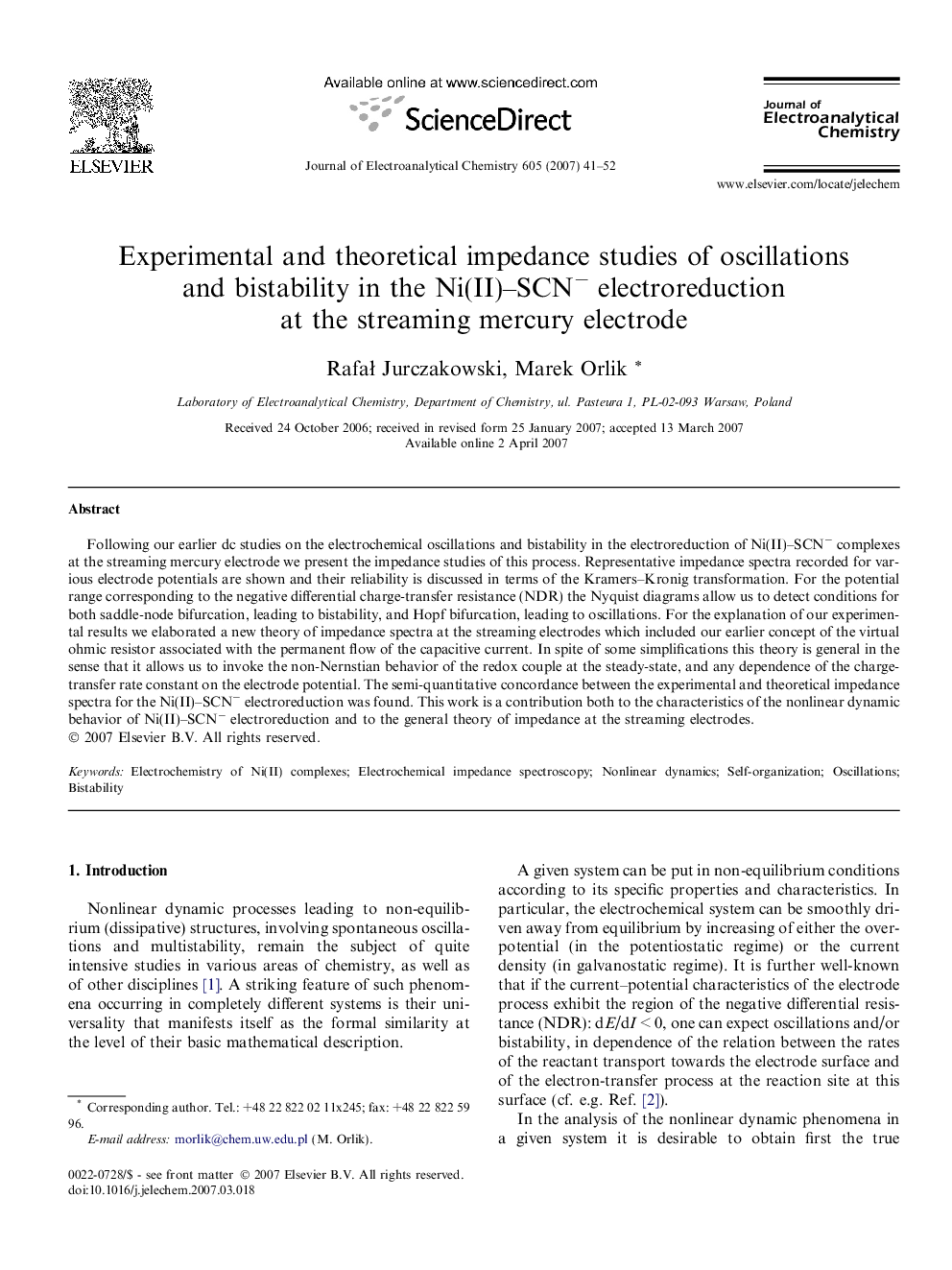| Article ID | Journal | Published Year | Pages | File Type |
|---|---|---|---|---|
| 220871 | Journal of Electroanalytical Chemistry | 2007 | 12 Pages |
Following our earlier dc studies on the electrochemical oscillations and bistability in the electroreduction of Ni(II)–SCN− complexes at the streaming mercury electrode we present the impedance studies of this process. Representative impedance spectra recorded for various electrode potentials are shown and their reliability is discussed in terms of the Kramers–Kronig transformation. For the potential range corresponding to the negative differential charge-transfer resistance (NDR) the Nyquist diagrams allow us to detect conditions for both saddle-node bifurcation, leading to bistability, and Hopf bifurcation, leading to oscillations. For the explanation of our experimental results we elaborated a new theory of impedance spectra at the streaming electrodes which included our earlier concept of the virtual ohmic resistor associated with the permanent flow of the capacitive current. In spite of some simplifications this theory is general in the sense that it allows us to invoke the non-Nernstian behavior of the redox couple at the steady-state, and any dependence of the charge-transfer rate constant on the electrode potential. The semi-quantitative concordance between the experimental and theoretical impedance spectra for the Ni(II)–SCN− electroreduction was found. This work is a contribution both to the characteristics of the nonlinear dynamic behavior of Ni(II)–SCN− electroreduction and to the general theory of impedance at the streaming electrodes.
